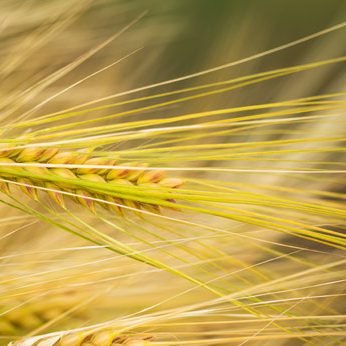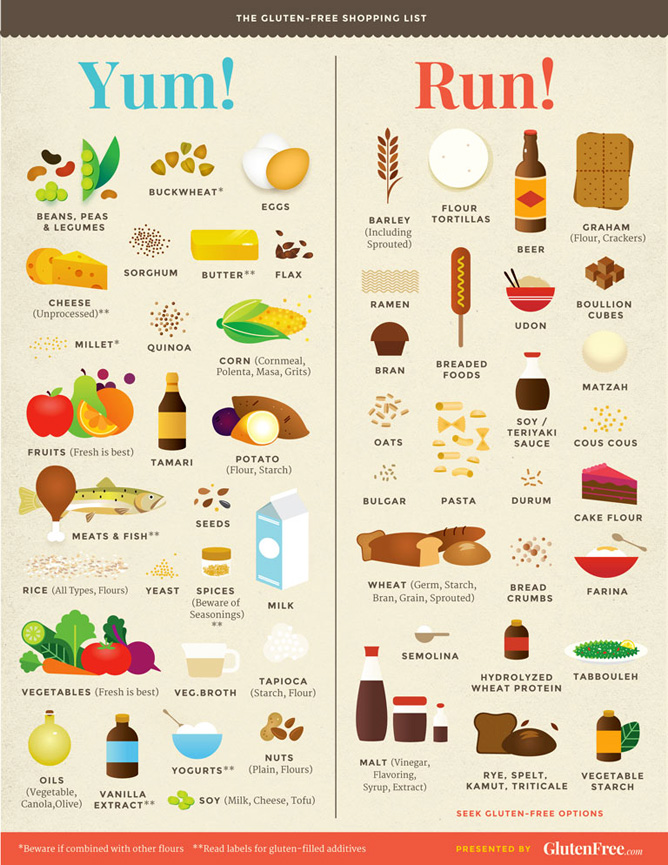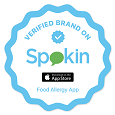COMMON ALLERGENS → Wheat & Gluten
COMMON ALLERGENS → Wheat & Gluten

DID YOU KNOW?
If a food product is labeled “gluten free” then it is safe to assume that it is also wheat free. However, if a product is labeled “wheat free” it may still contain gluten.
FAST FACTS
- Wheat is the most common type of grain in the US and is one of the top 8 food allergies.
- Though commonly confused, wheat and gluten allergies (aka Celiac’s disease) are separate afflictions.
- Celiac’s disease is an abnormal immune reaction to a specific protein, gluten, found in wheat, barley, and rye, while a wheat allergy is a reaction to various proteins found specifically in wheat.
→ GLUTEN ALLERGY (Celiac’s Disease)
- Can develop at any age and can affect all races. Typically lifelong.
- Onset of symptoms is usually gradual and can occur months or even years after introduction of gluten.
- Symptoms of Celiac’s disease can present intestinally or extra-intestinally. Intestinal symptoms such as diarrhea, weight loss, abdominal pain, and bloating are common in both adults and children. Extra-intestinal manifestations of the condition occur due to chronic inflammation, malabsorption, and adaptive immune responses. These include iron-deficiency anemia (and other nutrient deficiencies), osteoporosis, poor growth, delayed puberty, and skin conditions (e.g. blistering rashes, psoriasis, dry skin).
- wheat (including all foods mentioned above), rye, barley
- Wheat grass, flour, protein isolate, berries, germ oil, bran
→ WHEAT ALLERGY
- More common in children than in adults. Typically outgrown before adulthood.
- The most prevalent occupational allergy is a respiratory allergy to wheat, known as baker’s asthma. The reaction occurs after prolonged exposure to inhaled wheat flour and dust, as is the case with bakers and those in industrial food manufacturing.
- Reactions occur minutes to hour after exposure and includes hives, rhinitis (irritation and swelling in nose), and anaphylaxis
Common (and Hidden!) Sources
→ WHEAT
- Bulgur, durum, einkorn, farina, enmer, couscous, semolina, spelt, triticale, matzoh, pasta, seitan graham flour
- Commonly found in: cereals, baked goods, oats, soy sauce, surimi, starch, glucose syrup, Kamut®, energy bars, tabbouleh, breaded foods, veggie burgers, and more.
→ GLUTEN
- Commonly found in: beer, soy sauce, tabbouleh, oats, sausage, broths, malt/malt flavoring, egg substitute, imitation crab meat, processed cheese, gravy, marinades, breaded foods, fruit fillings and puddings, vodka, wine coolers, veggie burgers, and more.
- Oats are commonly cross-contaminated with wheat, making them unacceptable for both wheat and gluten allergic individuals. However, Gerbs Oats are gluten free!
- Rye and barley are acceptable for a wheat allergy but NOT a gluten allergy.
- Wheat and gluten are found in an abundance of processed foods (too many to list here!), so it’s extremely important to read labels carefully.

REFERENCES
1. Leonard MM, Sapone A, Catassi C, Fasano A. Celiac Disease and Nonceliac Gluten Sensitivity: A Review. JAMA. 2017;318(7):647-656. doi:10.1001/jama.2017.9730.
2. Spectrum of gluten-related disorders: consensus on new nomenclature and classification. https://www-ncbi-nlm-nih-gov.ezproxy.bu.edu/pmc/articles/PMC3292448/.










